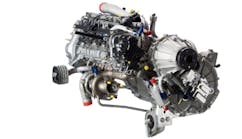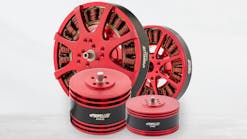BAE Systems Innovates Active Inceptor Technology for Stick to Surface Control
Pilots use sticks to control the movement of an aircraft – sending inputs from the stick to a flight control system that translates those inputs into commands the aircraft can perform.
BAE Systems’ active inceptors take pilot control to the next level. As part of an aircraft’s fly-by-wire flight control system, active inceptors – also known as active sticks – provide both static and dynamic tactile force feedback to the pilot directly through the stick. It is that change in the feel of the stick that can advise or cue the pilot to respond. Those cues warn pilots of structural or aerodynamic operating limits – giving them improved situational awareness to maintain a safe and stable flight.
Traditional mechanical inceptors are unable to change the feel of the stick in real time. With active inceptors, pilots can feel the feedback or resistance in the form of vibration directly as they fly the aircraft – in real time. It alerts them if they are close to exceeding certain flight parameters.
A world of firsts
BAE Systems is a world leader in active inceptor technology with more than 25 years of experience. Early versions of our active inceptors were designed for fighter jets and appeared on the F-35 beginning in the 1990s. The technology achieved its initial flight on the aircraft in 2000 and became the world’s first certified military active inceptor six years later.
Today, our active inceptors have flown on 13 different commercial and military aircraft around the world and have logged more than 200,000 flight hours. Our inceptors have flown on the first flights of multiple aircraft, including the Embraer C-390 Millennium, Gulfstream G500 and G600, Boeing AH-64 Apache and Sikorsky CH-53K King Stallion.
Investment in the future
We continue to invest in active inceptors to make them smaller, lighter and easier to integrate. Our latest technology – now in its fifth generation – is half the size it was just a few years ago. The electronic components in these systems fit into a single box that connects to the stick in the cockpit. This eliminates the need for multiple control units, freeing up space in the cockpit and helping operators save on fuel.
Our technology also makes it possible to link the pilot and co-pilot’s active stick controls so each can feel the other’s inputs in real time. This electrical linking eliminates the need for the expensive and heavy mechanical rigging required by a passive system.
These improvements provide pilots with an enhanced level of feedback and control, but with lighter and simpler components compared to traditional systems. BAE Systems remains committed to leading the way in next-generation active inceptor systems. We’re setting the pace of innovation with the technology to make it possible and the expertise to make it safe.




